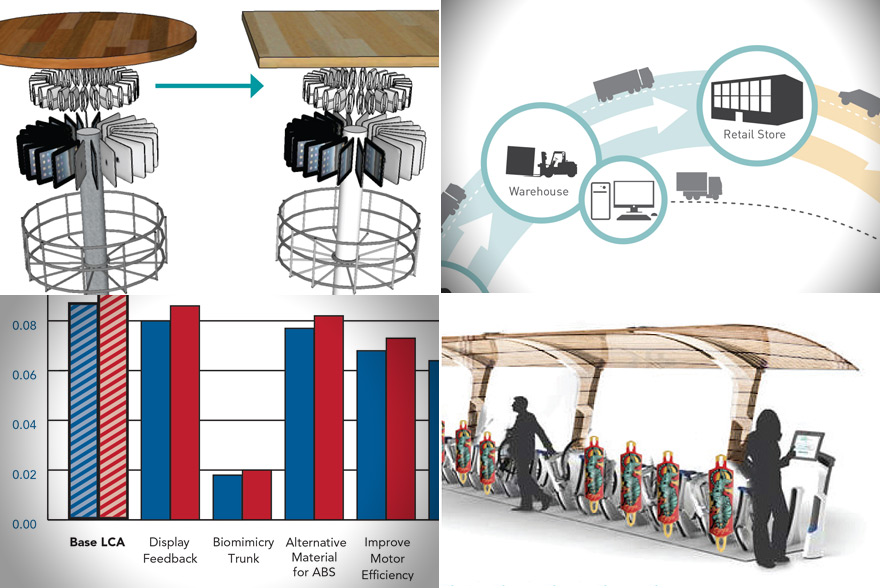Halfway through its second year, Minneapolis College of Art and Design (MCAD)’s Master of Arts in Sustainable Design program continues to represent the leading edge of advanced design studies. This year, four companies—Cascade Designs, Hamilton Beach, Anthro and Rayne Longboards—all had their products analyzed and brainstormed for sustainable redesign.
MCAD’s entirely online program gives students from around the world two years of training in analysis and creativity for sustainable design, from packaging and graphics to products. This past semester, I once again taught collaborative product design, which brings groups of students together across different industries and time zones to redesign consumer products. They start by video-chatting their product tear-down, to perform life-cycle assessment and determine top priorities for sustainability. Groups redesign their products using the Whole Systems and Life-Cycle design method created for the Autodesk Sustainability Workshop. This structures and unifies their ideation over the weeks, which spans energy effectiveness, design for lifetime, materials choices, biomimicry, and persuasive design.
The students did a fantastic job, deftly showing the companies which aspects of their products were the biggest concerns and which needn’t be bothered with, based on both LCA and green certification systems, showing companies a larger context around their products and generating a plethora of great ideas, from subtle tweaks to radical re-envisionings. Below are some samples of their work (click to enlarge in new window/tab).
The whole system map by Craig Johnson, Nadine Kümmel, Kate Mohn and Shari Welsh for Cascade Designs‘ Thermarest™ Mira sleeping bag and NeoAir sleeping pad. This was a particularly challenging product because Cascade Designs is already eco-conscious and the product is highly engineered.
One of the redesign ideas for an Anthro TAB40 tablet charging cart by Jessica Papa, Joel Kohn, Sarah Dehlinger and Jake Hvistendahl—it gives the product life beyond electronics obsolescence and eliminates the need for another piece of furniture by changing the cart to a table.
The life-cycle assessment results for the Hamilton Beach Big Mouth juicer, by Amy Dritz, Jerad Carlson, Michal Crawford-Zimring, and Gautam Muralidharan. It compares their top nine redesign ideas with the original juicer, to see which will have the biggest ecological improvements.
These are the six top redesign ideas for Rayne Longboards‘ Rival skateboard by DeWayne Esson, Wesley Petersen and Tim Hutchens. You can see it’s not just the board being redesigned, but packaging, board-share services, even factory lighting.
The students’ redesigns were a hit with the companies. Michael Mullen of Anthro said it gave them great new perspective, “intriguing solutions that were validated through the analysis tools and strategic discussions to weigh the value of the concepts” which they will continue exploring. Drew Carlson of Hamilton Beach said, “Your process was as valuable as the actual concepts it produced.” We feel like we’re succeeding in turning sustainability from a burden into an innovation tool, and making the world better one product at a time.
Images courtesy of MASD Student Work. Article originally published on Core77 on January 28, 2014.






